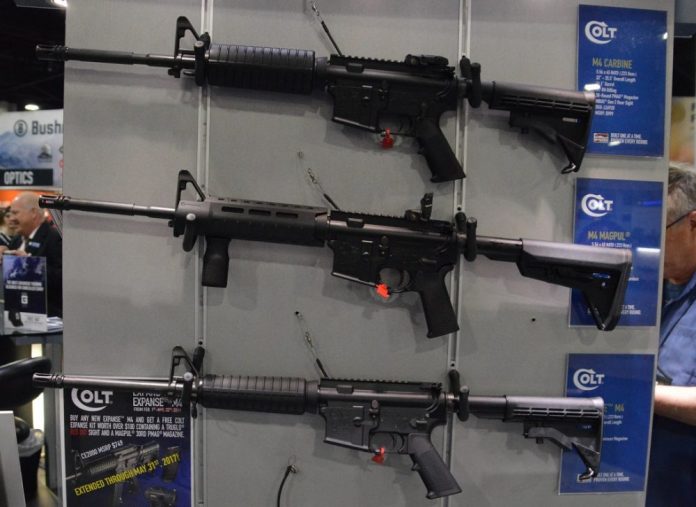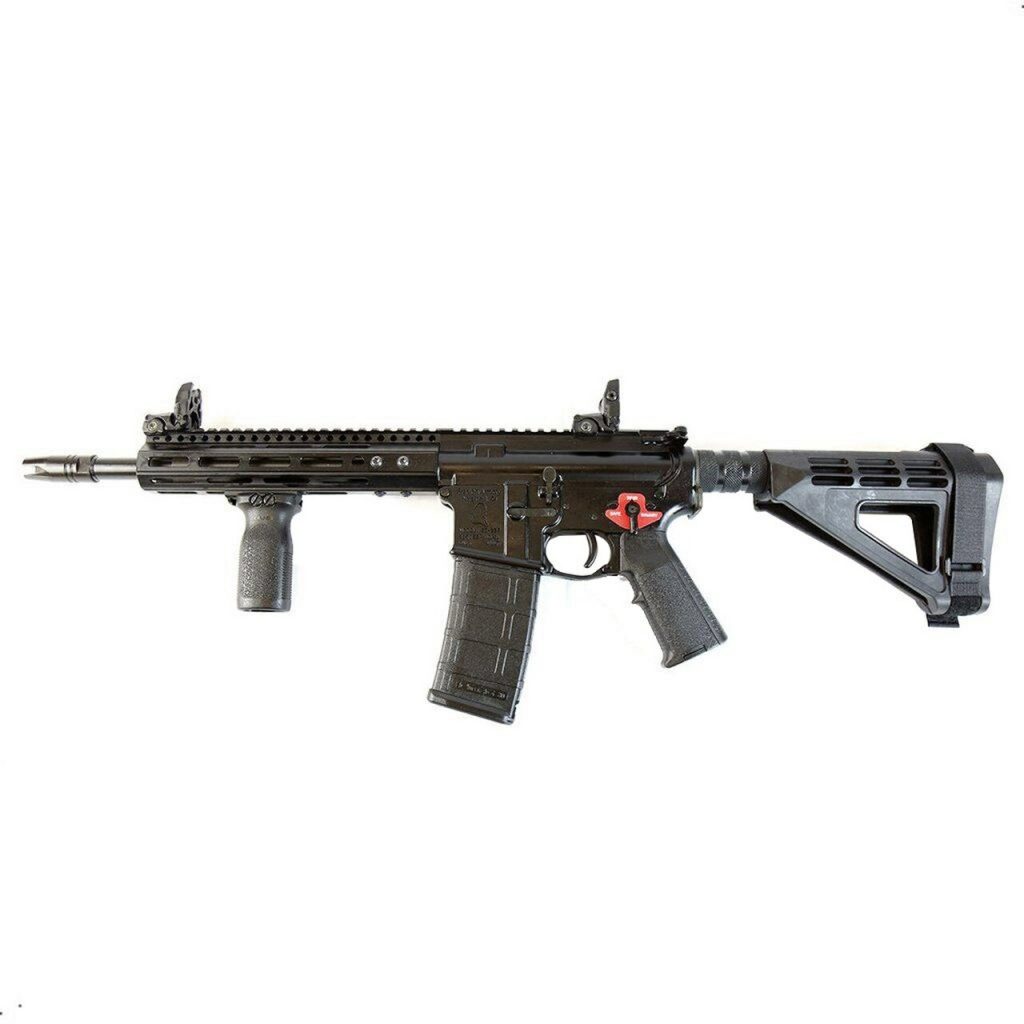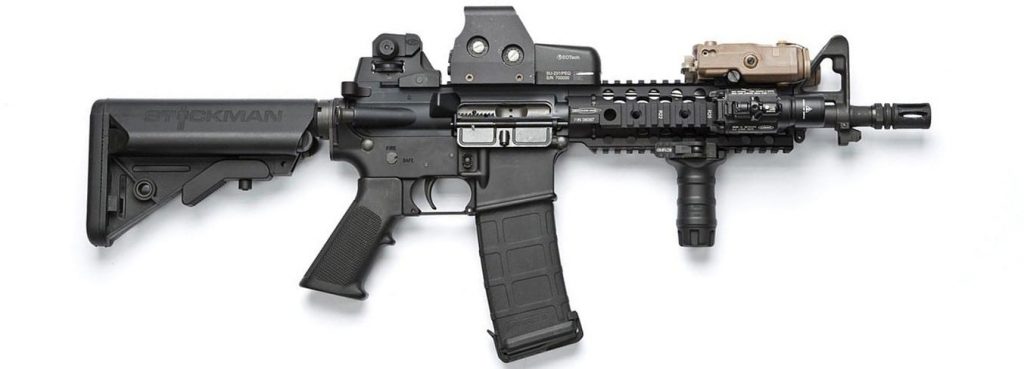
U.S. Firearms laws are a substantial godforsaken mess. Most of them rarely make sense, and firearms manufacturers are smarter than lawmakers and often find a way around silly rules. The AR-15 is America’s favorite gun, and why not? It’s modular, easy to use, lightweight, accurate, and capable. It’s so popular it comes in a variety of configurations—some for particular purposes and others to fit legal definitions. Today we are going to do a AR-15 breakdown and explain the various legal definitions and how they apply to the AR-15 platform.
AR-15 Breakdown 101 – The Rifle
The most common and most basic configuration of the AR-15 is the rifle variant. AR-15 rifles in the United States must meet a few pieces of legal criteria. First and foremost, a rifle in the United States has a barrel length of at least 16 inches and a shoulder stock. Any shorter of a barrel, and you have a short-barreled rifle, which we’ll talk about a little later.

In the AR world, the 16-inch barrel carbine variant is the most common but not the only option. Shooters can utilize a 14.5-inch barrel and permanently affix a muzzle device that extends the barrel to 16 inches, the permanent length of the barrel assembly, not the rifled portion is what is legally important. AR-15 rifles can use vertical grips without legal issues either.
The Pistol
AR-15 pistols are AR-15s without a stock and a barrel shorter than 16 inches. AR-15 pistols exist because people want AR-15s shorter than rifles and do not want to deal with the NFA, or people want to build an SBR after following the ATF’s stringent NFA process.
There is no set barrel length, and an AR pistol can have as short of a barrel or overall length as you desire. If the pistol is longer than 26 inches, it could be an ‘other firearm’, which we’ll address next. You can attach a brace to a AR-15 pistol to make such a heavy pistol easier to handle. However, you cannot do so with the intent to shoulder the brace.

One weird part of this AR-15 breakdown has a lot to do with vertical grips. An AR pistol can not have a vertical grip but can have an angled grip. It’s a weird rule, but many of the ATF rules are funny. It goes back to the NFA.
AR-15 pistols are legally pistols, and this often changes state laws regarding them. The different laws could be required waiting periods, the age to purchase the weapon, and more. It’s not all bad news as AR-15 pistols can be concealed or carried loaded and ready in a vehicle in some states where doing the same with a rifle is not allowed.
The ‘Firearm’
All AR-15s are firearms, right? Well, yeah, that’s true, but Firearm or Other is a category for weapons that fall outside of normal categories of pistol, rifle, and shotgun. For example, the Mossberg Shockwave is not a shotgun, but a firearm. For this AR-15 breakdown, we are going to focus on AR-15 firearms.

AR-15 firearms do not have a standard for barrel length but must be over 26 inches long in its smallest configuration. You cannot attach a stock to an AR firearm. An AR-15 firearm could have a stabilizing brace, and if it’s the adjustable model, it will be measured with the brace collapsed.

The big difference between AR firearms and AR pistols is the ability to attach a vertical grip. That often defines what an AR firearm is versus what an AR pistol is. AR firearms are regulated differently as well, and you lose the legal benefits of an AR pistol. The benefits of an AR firearm are rare and typically allow shooters to avoid onerous state assault weapon bans. Kits like the Franklin Armory California Compliant Kit is one such example.
The Short Barreled Rifle
Our last firearm in this AR breakdown is the Short Barreled rifle, or SBR. SBRs are Title 2 firearms and require a tax stamp and permission from your Majesty (the ATF.) SBRs have a stock and a barrel length of fewer than 16 inches. You can even attach a vertical grip to the thing.

Short barreled rifles are the wild west, except you have to purchase a ticket before you can jump on the Oregon Trail. Some states do not allow the ownership of SBRs, so it may not even be an option for you, depending on state laws.
You can purchase a pre-built AR SBR or manufacture your own. Either way, you have some paperwork to do, and a two hundred dollar tax stamp to pay, and NFA laws to deal with.
The Many Faces of An AR-15
The popularity of the AR-15 is unlikely to be matched in my lifetime. You can assemble one, build an 80 percent lower model, or buy one. The fact that four different legal configurations exist shows just how popular the platform is. Hopefully, this AR-15 breakdown has helped you understand the different pros and cons of each configuration and maybe even helped you choose the right configuration(s) for your wants and needs.



